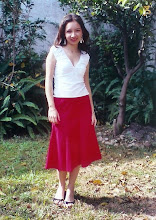Valencia, Day 2.
Well, today I figured it would be good to see the more "traditional" parts of the city so early in the morning I headed over to the Cathedral. Now, the Cathedral's pride and joy is the treasure carefully guarded in the Chapel of the Holy Chalice because, as it turns out, this is THE Chalice used by Jesus during the last supper. Yup. That's right. The story goes that the Chalice was taken to Rome by St. Peter, and after being taken into custody by each of the Popes in turn, Sixtus II ordered the chalice taken to Huesca to protect it from emperor Valerian, who at the time was commanding a rather virulent prosecution of the Christians. During the 15th century, the Chalice was brought to Valencia, where it has been part of the treasure ever since, and in 1916 (yeah, as recent as that!) it was permanently installed in this chapel. It is made of agate and gold and silver, a very pretty cup indeed.
Yeah. Very impressive, huh?
The problem is, as anyone who has ever seen Indiana Jones and The Last Crusade knows, the real chalice was a carpenter's cup, simple, made out of wood, and what's more the movie shows us very clearly that whoever drinks of the false cups will die a horrible, painful death (like spontaneously combusting, or being pulverized after aging 300 years in 20 seconds, or something rather terrible, at any rate), so....
Incredible that all the way to modern times, 1916, and we're still trying to tell fairy tales to tourists. It makes me so mad.
Anyway, after the fairy tales, I decided I needed a dose of science to recover my sanity, and since I like the Calatrava buildings so much, it was a good excuse to see them from the inside, for they are the site of the Museo de Ciencias Principe Felipe, which I figured, if it is anything like the Science Museum in Boston, it is very well worth the visit.
Unfortunately, it wasn't quite as good, though it had some nice features. The Physics exhibits were not too exciting, and the explanations were neither very accurate nor correctly, in my opinion, didactically oriented, except for one nice math/civil engineering panel on catenary arches, where you actually get to assemble your own, but which I suspect (for several subtle reasons not worth listing here) that, like several other panels, was modelled after some exhibits in San Francisco's Exploratorium.
The bio exhibits were quite good though: the explanations were better, it was modernized with lots of current issues and even ethics debates (the issue of cloning was raised and peppered with several newspaper clippings from recent years both for and against both sides of the argument, for instance), and it was full of little tidbits of curious information, like, for instance, the fact that it was the appearance of chromosome #2 which fuses what were previously two other short ones what signified the appearance of modern man, or little recipes for extracting DNA from saliva using simple household ingredients like common salt, alcohol, and sodium bicarbonate, as well as links to the internet genome databases (in this case they went to one which is fairly readable and easy to understand for the layman) and statistics on how many genes each chromosome contains, what they more or less control/determine, and how many Mbs (Megabases) of information each chromosome contains.
Way cool. Hopefully the math/physics section will grow some improvements as well. For the moment, I can understand why the investment in the bio and earth sciences section: these sciences tend to be more colorful, people are more familiar with them (for who hasn't been on a visit to a doctor?) and people tend to shy away from too much math. Still, what better chance to change that. One always hopes...

No comments:
Post a Comment